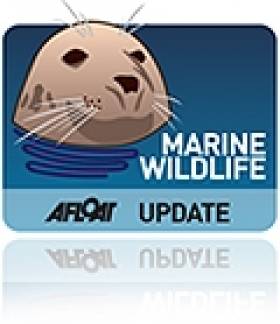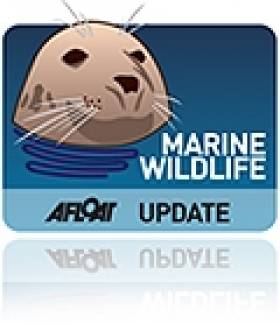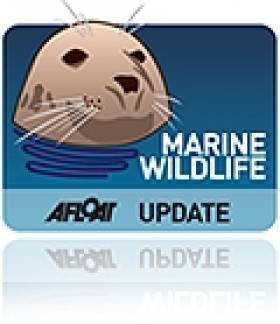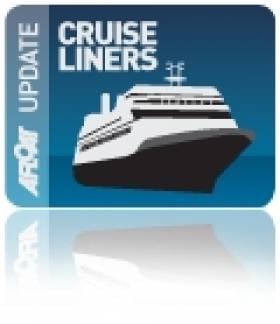Displaying items by tag: Dingle
Fishermen Condemn Illegal Killing of Baby Seals
#MARINE WILDLIFE - Fishermen have condemned the appalling killing of two baby seals whose heads were nailed to signs outside a wildlife sanctuary in Dingle last week.
As previously reported on Afloat.ie, staff at the Dingle Wildlife and Seal Sanctuary were subject to the "sickening" sight on Thursday morning, which was alleged to be connected to a campaign among local fishermen urging for a cull of seal numbers in the area.
However, as the Irish Independent reports, fishermen have spoken out to decry the grisly incident.
Michael Hennessy, skipper of the fishing vessel Realt na Mara, said: "This kind of thing is not going to do any good for any campaign, and fishermen would not lower themselves to do something like that."
Michael Flannery of the Irish Fish Producers' Organisation (IFPO) added: "Fishermen are calling for a seal cull but we want this carried out in an organised, approved and humane way."
According to the Irish Examiner, Sea Shepherd Ireland has added a €2,000 reward to the €5,000 offered by fellow animal rights group ARAN for anyone with information leading to the arrest or conviction of those responsible for the illegal seal killing.
Meanwhile, two grey seals pups currently being cared for at the Dingle sanctuary may be released earlier than expected due to fears for their security.
Seal Heads Sicken Staff at Dingle Wildlife Sanctuary
#MARINE WILDLIFE - Staff at the Dingle Wildlife and Seal Sanctuary were subject this morning to the gruesome sight of two baby seal heads nailed to signs outside the facility.
According to the Irish Independent, the grisly scene was accompanied by a sign reading 'RIP Cull' in red paint, presumed to be a reference to local fishermen's urging for a reduction of seal numbers in the area.
Last year Afloat.ie reported on Kerry fishermen's call for a cull of the "overprotected" local grey seal population over claims that they eat up to 10kg of fish a day.
And earlier this year, fears were growing of an illegal cull of marine wildlife after a two seals were found dying from bullet wounds on Tramore Beach in Co Waterford.
"It was sickening," said the sanctuary's Ally McMillan of the incident. "I wanted to be sick when I saw them."
Gardaí in Dingle removed the seal heads and sign as part of their investigation.
Meanwhile, the Irish Examiner reports that animal rights group ARAN has put up a €5,000 reward for anyone with information leading to the arrest or conviction of those responsible for the killing.
“Animal abusers are cowards, and we’re hoping this reward will apprehend those responsible for this most sickening act of animal abuse,” said ARAN spokesman Stephan Wymore.
New Harbour Charges Could End Trips to See Fungie
#IRISH HARBOURS - "Draconian" new charges for harbour users could bring an end to boat trips to see Dingle's most famous resident, according to The Irish Times.
Fungie the dolphin has been a mainstay of Dingle harbour for almost 30 years, but boat trips to visit him could cease to operate "with immediate effect" if charges of up to €9,000 are imposed "in advance" of the season.
Currently operators in the Dingle Boatmen's Association pay around €2,500 to use the harbour at the end of each season.
Association chairman Jimmy Flannery called on anyone working in tourism in Ireland to make submissions to the public consultation before the deadline next Friday 20 April.
As previously reported on Afloat.ie, yacht owners are also up in arms over the new charges proposed by Marine Minister Simon Coveney that could see their rates hiked by an incredible 800 per cent.
And the news comes not long after fellow Kerry harbour users protested proposed new bylaws to regulate their activities and impose new charges.
Kerry Harbour Users Say No to Over-Regulation
#IRISH HARBOURS - Protesters took to the water off Kerry's piers last month in an organised swim drawing attention to proposed harbour bylaws designed to regulate the activities of water users.
“We need to make the public aware they have to make submissions,” Denise Collins told The Irish Times from Kells, which hosted one of the largest swims. “Traditional activities such as swimming will be over-regulated, we fear.”
The proposed bylaws would give Kerry County Council greater control over 16 of the county's 57 harbours and piers, including Kells, Kenmare, Portmagee, Brandon and Ventry.
Under the new bylaws, strict regulations would be placed on the use of loudhailers, landing and unloading passengers and freight, waste and even movement around the harbour.
"Draconian" charges are also set to be imposed on fishermen and other harbour users, while campaingers also feel that a ban on swimming and diving could also be added to the list.
The proposed bylaws already suffered a set-back earlier this year when Kerry County Councillors decided to restart the consultation process to allow the fishing industry, tourism operators and other interests more time to make submissions.
According to the Irish Examiner, only two submissions had been received by the council as of its January monthly meeting, despite senior council officials working for months on the draft proposals.
Cllr Toiréasa Ferris commented that the proposed charges in particular "would have huge implications for fishermen, some of whom might currently be earning only between €40 and €50 for a 14-hour day."
As previously reported on Afloat.ie, charges may also soon be hiked on yachts berthing at Ireland's main fishing harbours, a list that includes Dingle in Co Kerry.
Irish Marine Federation chairman David O'Brien expressed concern at the potential for such charges to damage "the good tourism dividend for coastal towns", noting that for every euro spent on a harbour berth, €10 was normally spent in the locality.
Massive Fee Increases Proposed for Harbour Yacht Berths
#IRISH HARBOURS - Yachts berthing at Ireland's main fishing harbours could see their charges hiked by an incredible 800 per cent.
According to The Irish Times, Marine Minister Simon Coveney has announced a mere 21 days for comment and consultation on the draft Fishery Harbour Centres (Rates and Charges) Order 2012. The consultation document is attached to the bottom of this post and available to download as a pdf.
The proposed new charges include an annual fee of €250 per metre for yachts, which could see a 10-metre yacht currently paying €312 a year for a berth shell out as much as €2,500 annually for the same space.
Additional water and electricity costs could even see this bill rise to €3,100 - for berths that come "without proper marina facilities in most cases".
The proposals apply to the State's six fishery centres at Killybegs, Rossaveal, Dingle, Castletownbere, Dunmore East and Howth, only two of which have pontoons suitable for leisure boats.
The Irish Times has more on the story HERE.
Common Seal Pups Rescued in Dublin
#MARINE WILDLIFE - Seal pups Rebecca and Emma had a curious audience of tourists at Malahide Castle earlier this month as they prepared for their relocation to Dingle, where they will be cared for by Irish Seal Sanctuary (ISS) volunteers.
The pups were rescued from different parts of north Dublin. Both were found very ill at the time, but according to the ISS, volunteers rallied to their support, providing much needed fluids for rehydration before their long journey south.
Rebecca is named after the daughter of her rescuer, ISS volunteer and Howth businessman Jon Cooke. Meanwhile, Emma was rescued by one of the founder members of the ISS, Johnny Woodlock, from the beach in Skerries.
The ISS added that it is grateful for the sponsorship of the rehab season the Dingle Wildlife and Seal Sanctuary is providing for the seal pups' care.
'Reconnaissance' Wins Fenit to Dingle Race
Peadar O'Loughlin's Sigma 33 Reconnaissance was the overall winner of Tralee Bay Sailing Club's race from Fenit to Dingle this October but only after a great comeback in the last two miles of this County Kerry race.
The first boat in was Galileo, with Reconnaissance hot in his tail and Jaguar not far behind either, with Rooster coming in shortly afterwards. Abandon Office, Powder Monkey and Ridire Ban (previous class winner in Dun Laoghaire - Dingle race) retired. On corrected time, first place in IRC went to the Sigma 33
-Reconnaissance, having made a great comeback to steal it from Jaguar in the last two miles.
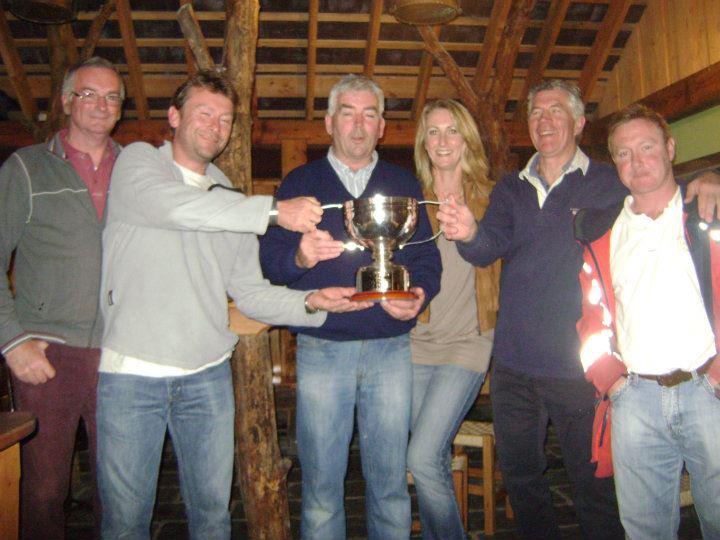
Lifting the O'Connell Cup, the last feature race of the Tralee Bay Sailing Club season. The Cup was Sponsored by Finbar O'Connell Jewellers, Tralee and was won by Reconnaissance, a Sigma 33, owned by Peadar O'Loughlin and crewed by Brian O'Sullivan, Frances Clifford, Fergus Kelliher, Kieran Kelliher, John O'Mahony and Eoin Nolan.
This was the last feature race in the 2011 Tralee Bay Sailing Club calendar. The October series continues 'til the end of the month, and an End of Season Party will be held on the last weekend of the month, after racing that day.
Clipper Cruiseship Calls In for Fish & Chips
According to her schedule the Clipper Odyssey has since made several calls to include Waterford, Cobh and along the stunning scenery of the western seaboard with anchorage calls off the Great Blasket Islands, Dingle.
Yesterday the 5,218 tonnes vessel operated by Clipper Cruiuses had also called to Inishmore of the Aran Islands. Otherwise the 120 passenger cruiseship is normally found serving in the Pacific Ocean from New Zealand to the Russian Far-East. She is due to depart Co. Donegal this evening bound for Portrush.
As for the 226-passenger Le Diamant she is a frequent caller not just to Dublin, she had arrived from Penzance. The 8,282 tonnes vessel is run by Marseilles based Ponant Cruises and the twin-funnelled vessel is due to depart this evening for Fishguard.
Haugheys Present Prizes at Dingle Regatta
Members of the Haughey family were on hand to present prizes to the winners of this year's Dingle Regatta at the weekend.
The Irish Independent reports that Conor Haughey was joined by brothers Ciaran and Sean, sister Eimear and their families at the prizegiving ceremony.
Their presence marked the strong ties their father, the late former Taoiseach Charles Haughey, had with the sailing community in the Co Kerry town.
Locals won out in this year's regatta, which has taken place since 1857 and is still raced with traditional naomhog boats.
The Griffin brothers and Michael O'Leary took the men's title, Maunza Heidke was tops of the women.
Haughey's Celtic Mist: A Stormy History
The Irish Independent today recounts the tumultuous history of the Celtic Mist - the yacht once owned by the late former Taoiseach Charles Haughey that recently took part in the Tall Ships Races has now begun a new life as a research vessel with the Irish Whale and Dolphin Group (IWDG).
"But as the boat continues to ride the waves off the west coast of Ireland it will forever be associated with the shenanigans of 'Champagne Charlie'," writes John Costello.
Though controversial for many - from its purchase in 1987 and its subsequent lavish outfitting to the extravagance of the lobster and vintage wine that were always available on board - there are also fond memories, particularly in Dingle, where Haughey helped to transform the harbour.
And who can forget the time when Loyalist terrorists threatened to blow up the yacht in a bid to avenge the death of Lord Mountbatten?
The Irish Independent has more on the Celtic Mist's storied past HERE.



























